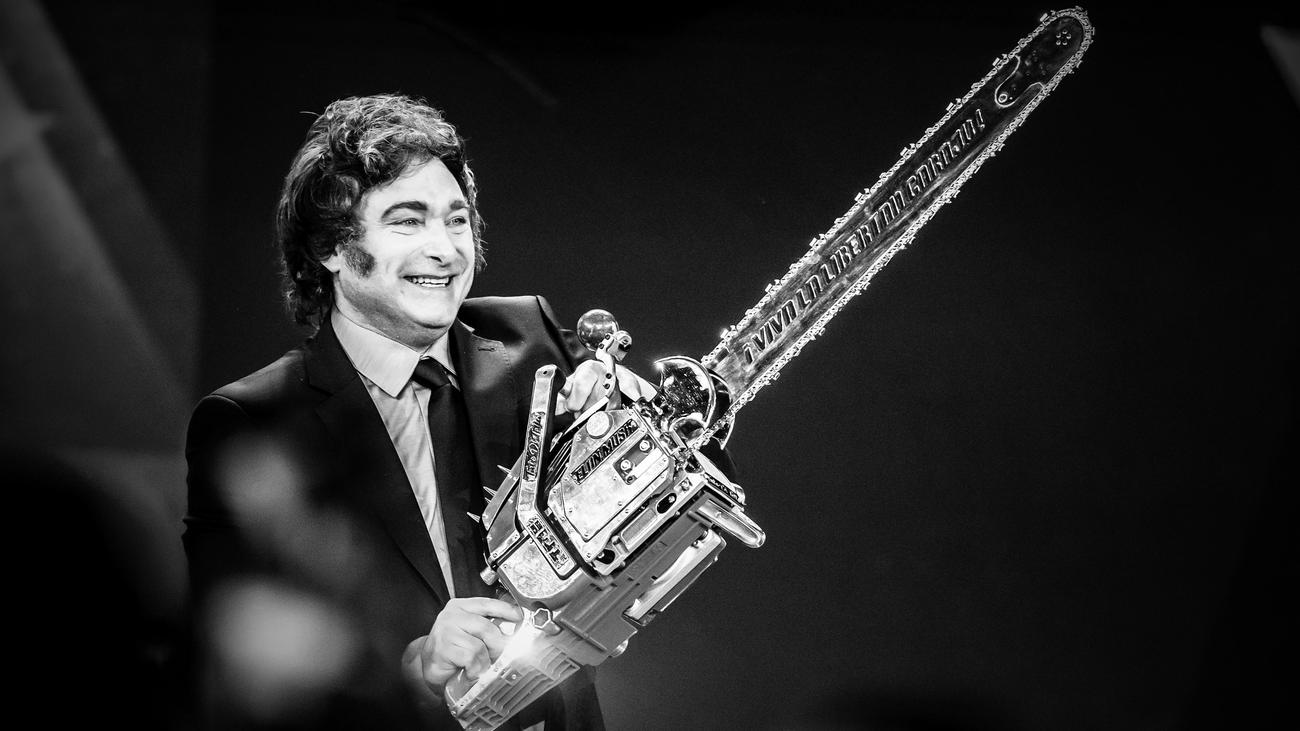Interpreting Vogl's Chainsaw Metaphor: A Deep Dive into the Power of Radical Change
Introduction:
Have you ever felt trapped, stuck in a rut, unable to move forward? Many of us experience this feeling, whether in our personal lives or professional careers. In his insightful work, [insert source/book title where Vogl's metaphor appears, link to the source if available], author [Vogl's name] uses the potent image of a chainsaw to illustrate the necessary, though often frightening, process of radical change. This article will delve into the various interpretations of Vogl's chainsaw metaphor, exploring its implications for personal growth, organizational transformation, and overcoming inertia.
Understanding the Chainsaw Metaphor: A Tool for Deconstruction
Vogl's chainsaw isn't about destruction for its own sake. Instead, it represents the bold, decisive action required to dismantle ingrained systems, outdated habits, or toxic relationships that are hindering progress. Think of it as a surgical tool, precisely cutting away the dead wood that prevents the healthy growth of something new.
Key Interpretations of the Chainsaw:
-
Cutting Through Resistance: The chainsaw symbolizes the effort needed to overcome resistance to change. This resistance can manifest as fear, complacency, or the comfort of the status quo. The chainsaw represents the necessary force to break through these barriers.
-
Deconstructing Limiting Beliefs: Our minds can be cluttered with self-limiting beliefs that hold us back. The chainsaw metaphor highlights the need to actively challenge and dismantle these beliefs, creating space for a more positive and empowering mindset. This involves confronting deeply ingrained assumptions and replacing them with constructive alternatives.
-
Organizational Restructuring: In the context of organizational change, the chainsaw represents the radical restructuring needed to adapt to evolving market conditions or overcome internal inefficiencies. It signifies a decisive break from outdated practices and a commitment to innovative solutions.
-
Personal Transformation: On a personal level, the chainsaw can symbolize the courage to break free from unhealthy patterns, relationships, or habits. It represents a commitment to self-improvement and personal growth, even if it requires facing difficult truths and making significant sacrifices.
The Importance of Precision and Intention
While the chainsaw represents a powerful tool for change, it's crucial to emphasize the importance of precision and intention. It’s not about indiscriminate destruction, but rather a carefully considered dismantling of what no longer serves its purpose.
Considerations Before "Revving Up the Chainsaw":
-
Clear Vision: Before wielding the chainsaw, you need a clear vision of what you want to achieve. What are you hoping to build after the demolition? Having a well-defined goal is crucial for successful transformation.
-
Strategic Planning: Radical change shouldn't be impulsive. Develop a strategic plan outlining the steps involved in the process, potential challenges, and mitigation strategies.
-
Careful Selection: Identify precisely what needs to be cut away. Avoid impulsive or emotional decisions that could lead to unintended consequences.
Beyond the Chainsaw: Reconstruction and Renewal
The chainsaw metaphor is not solely about destruction; it's a catalyst for reconstruction and renewal. Once the deadwood is cleared, space is created for growth, innovation, and the emergence of something new and stronger.
Embracing the Post-Chainsaw Landscape:
-
Building a New Foundation: After the initial disruption, focus on building a strong foundation for the future. This involves establishing new systems, processes, and habits that support your goals.
-
Cultivating Growth: Nurture the newly created space by fostering innovation, creativity, and collaboration.
-
Continuous Improvement: Change is an ongoing process. Regular evaluation and adaptation are essential for sustaining growth and adapting to future challenges.
Conclusion: Harnessing the Power of Radical Change
Vogl's chainsaw metaphor serves as a powerful reminder that significant progress often requires radical change. It emphasizes the importance of decisive action, strategic planning, and a clear vision for the future. While the process may seem daunting, the potential for growth and renewal makes the effort worthwhile. By carefully understanding and applying the principles of this powerful metaphor, we can overcome inertia, dismantle limiting beliefs, and create a more fulfilling and productive life—both personally and professionally. Are you ready to wield your chainsaw?
(Optional CTA): Share your thoughts on Vogl's chainsaw metaphor in the comments below! What areas of your life could benefit from this approach to radical change?
